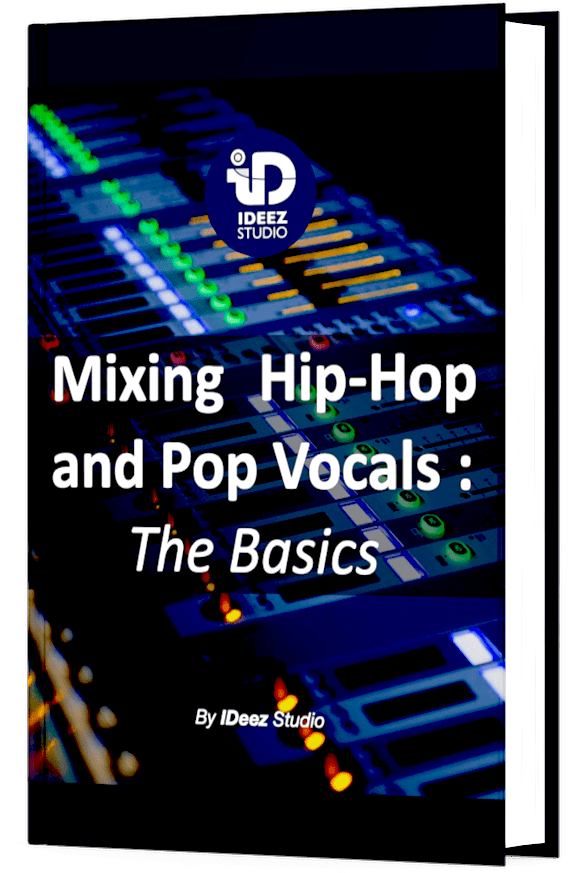When it comes to adding energy and punch to your mix, saturation often proves to be a very powerful tool. But what are the best saturation plugins on the market today? And which plugin is best suited to which situation? I’ll give you all the answers you need in this article on the 10 best saturation plugins for music.

The 10 best saturation plugins for music production are:
- FabFilter Saturn 2
- Soundtoys Decapitator
- iZotope Trash
- Softube Saturation Knob (FREE)
- Arturia Dist TUBE-CULTURE
- Native Instruments Dirt
- Antares Warm
- Kilohearts Distortion (FREE)
- BlackBox Analog Design HG-2
- Arturia Tape MELLO-FI

Typical situations for using saturation in your music
In music production, there are typical situations where the use of saturation is ideal. But before using any saturation, you need to know the direction you want to go in.
Do you want to use saturation to achieve grain? Do you want a touch of soft saturation to give warmth to your source? Or to completely break down the natural timbre of the processed source to create a new tone?
With saturation, one thing’s for sure: you can go in many different directions, both artistically and creatively. Let’s explore the most likely cases.
1. Soft saturation on vocals
Using soft saturation on vocals is commonplace in vocal mixing, especially in professional mixing. But let’s be honest, finding the right balance is far from easy. By the way, I wouldn’t recommend using saturation on your vocals if you’re at the beginning of your learning process in music mixing.
But if you’re at a relatively advanced level, saturation can really bring that “pro” touch you’re looking for in your mixes. The type of saturation that often works best is tape saturation. But tube saturation can also work very well. We’ll talk about this later, when we look at some plugins.

2. Saturation on your mixbus
It’s also very common to use a touch of saturation to give energy, snap and punch to mixes in preparation for mastering. Thanks to its harmonics, saturation can enhance percussive attacks and highlight transients.
On a mixbus, it’s often better to use advanced saturation plugins for precise, meticulous processing. Each frequency band may need different harmonic processing, and some of the plugins on this list can do the job brilliantly!
3. Stronger saturation on instruments
Saturation can be less “technical” and more “creative” than you might think. Witness some of Kanye West’s legendary tracks from his golden age in the early 2000s, where saturation became an instrument in its own right.
Used in a more extreme way, saturation can sometimes create unexpected and surprising results, and that’s exactly the beauty of this tool! Whether on guitars, synths, or any other instrument, it’s always interesting to explore the use of saturation in your musical productions or mixes.

1. FabFilter Saturn 2

FabFilter plugins are renowned for being extremely comprehensive in terms of features and technical possibilities. And Saturn 2 is no exception! Of all the saturation plugins on the market, it’s probably the best. But why is it so much better than its competitors?
Well, for a start, this plugin lets you explore many different types of saturation. From the smoothest, such as subtle tape, to the most extreme, such as aggressive British amp emulations. This makes it a very versatile plugin, usable on many different types of sources.
Looking for a professional sound engineer specializing in pop and hip-hop music ? You’re in the right place! Mixing, mastering, production, editing,… we’ve got it all covered!
Let’s start now!
Secondly, the plugin allows the user to use several different types of saturation on each frequency band. This is very interesting for a more accurate processing of the source being treated.
And finally, Saturn 2 is one of the only saturation plug-ins on the market that lets you modulate your saturation. This feature opens many doors, both creatively and technically.
2. Soundtoys Decapitator

Another classic for music production! In recent years, Decapitator has established itself as a must-have plugin when it comes to saturation. But what makes this saturation plugin so special?
What sets it apart from its competitors is its impressive ability to precisely emulate the analog saturation of some of music history’s legendary preamps and devices.

The way Decapitator works is very simple. Each letter at the bottom of the interface corresponds to the saturation produced by a specific hardware device. For example, you’ll be able to enjoy the Ampex 350‘s gentle tape saturation (A) as well as the more aggressive tube saturation of the Culture Vulture (T or P).
Once you’ve got the sound you want, you can play with the low-pass and high-pass controls and the mix knob to get exactly the sound you’re looking for.
I’d also recommend exploring the “Punish” switch for more… surprises!
3. iZotope Trash

At the time of writing, iZotope Trash is the most recently updated plugin… and what an update! With this modern (almost futuristic) and intuitive interface, iZotope has hit the nail on the head!
This latest version of Trash has, first and foremost, the advantage of having many types of saturation to explore (like, really many, almost 60), which, like Saturn 2, makes this plugin a very versatile tool for music production. If you’re not sure where to start, you can also explore iZotope’s presets and get off to a good start.

Another special feature of this plugin is the “Convolve” section. This allows you to apply impulse responses (IR) to your processing and add unique acoustic environments and textures. And best of all, you can even import your own IRs!
Finally, you can separate your processing into 3 frequency bands and apply a different saturation (or not) to each band for more precise and/or creative saturation.
The cool thing about iZotope Trash is also the visual aspect. Compared with Trash 2, which had a horrible interface, there are now lots of visual elements to guide the user through the process.
Trash is a pretty crazy plugin, which is, in my opinion, better suited to the more creative applications of music production thanks to its many features and distortion algorithms.
4. Softube Saturation Knob (FREE)

Here’s the first free plugin on this list! And, honestly, as the manufacturer Softube would say on its website, this plugin is “too good to be free, but it is!”, and that’s lucky for us music producers, musicians and sound engineers!
Through its extreme simplicity, the Saturation Knob offers three distortion modes: high, neutral and low. Each mode lets you explore the plugin on many different sources: vocals, drums, guitars,… This plugin can be useful in many different situations.
And although it may seem very (too?) simplistic, I can assure you that when you hear the harmonic richness of this plugin, you’ll want to use it in all your mixes! And then… well, this plugin is free! So you’ve got nothing to lose by trying it out!
5. Arturia Dist TUBE-CULTURE

I have to be honest, I’m a big fan of the Culture Vulture (which I’ve been lucky enough to use a dozen times so far). This hardware saturation from Thermionic has a unique texture and tone that works wonders, especially on drums when it comes to making them explosive to the extreme.
And I find that this Arturia emulation comes very close to the hardware unit. Which is a real luxury for us musicians and music producers. Because no other plugin (apart from perhaps the Decapitator, part of which is also an emulation of Culture Vulture) has a similar texture to this incredible machine.

Through its 3 types of tube, triode, pentode and a second type of pentode, Culture Vulture is the ideal tool for making your mixes explosive and “nasty” (yes, that’s really the word that describes Culture Vulture taken to the extreme).
In addition to its unique tone, this saturation from Arturia (or rather Termionic) has the big advantage of being very easy to use. There aren’t many knobs, and they’re all very easy to get to grips with.
This saturation can transform your mixes, believe me!
6. Native Instruments Dirt

I know a lot of music producers wouldn’t agree with putting this Native Instruments plugin on this list, but… personally, I love playing with it!
What I find really cool about Dirt is the fact that it has two saturation stages. And you can use them either in parallel or in series. This makes it easy to explore different saturation colors quickly and efficiently.

As well as being able to adjust the Drive and saturation levels easily, you can also play with the 3 types of saturation offered by Dirt. The first is rather soft, the second brighter and the last very aggressive.
I think this saturation plugin will appeal to all types of user: musician or sound engineer, amateur or pro,… You’ll see that behind the toy-like design lies a high-quality plugin that can be useful in many mixing and music production situations.
7. Antares Warm

Sometimes, in vocal mixing, it’s necessary to add a slight saturation to give warmth and roundness to the voice. Some voices recorded directly through a “basic” interface and converter can also sound very digital and “too clean”. In this situation, I’ll use Warm 90% of the time.
But why this particular plugin and not another? Well, the first important thing to know is that Warm was designed to mimic the saturation of the legendary tube amps of the 50s and 60s. Pushed a little to their limits, these preamps were known for adding a touch of warmth to the processed sound, without being aggressive in the treble. And that’s exactly what Warm brings out!

By using Velvet mode sparingly, you can get rid of the digital aspect of your vocals and bring back the natural warmth of the human voice. And if you want to go for a little grit and brilliance all the same, you can opt for Warm’s second mode: Crunch mode.
Whatever the situation in which you use this plugin (it can obviously work on sources other than vocals), in my opinion it’s a plugin that should be used sparingly. It’s not a plugin that needs to be pushed to extremes to be used to good effect.
8. Kilohearts Distortion (FREE)

And here’s the second free plugin on this list, called… Distortion! And it was built by a manufacturer plugin I particularly like: Kilohearts.
Kilohearts plugins are intuitive, easy to handle and efficient. And despite their distressingly ugly interfaces, the quality of these plugins is undeniable.
Thanks to the 5 types of saturation Distortion offers, you’ll be able to use this Kilohearts plugin on drums, guitars and synths alike. The grit this plugin adds to processed sources is really cool and exciting!

And then… there’s the feature I love that makes this plugin so easy to include in this list of the best saturation plugins: the Spread knob. This knob, which is not found in any other saturation plugin (to my knowledge), will add different bias levels to the left and right channels to create a slight stereo over a mono track. I’ve used this simple feature many times in music production situations!
Another cool thing about this plugin is that you can play with the dynamic knob to maintain the dynamics of the saturated source or not.
In short, Distortion is a very simple plugin, yet one that lets you go into great detail!
9. BlackBox Analog Design HG-2

After an extremely simple plugin, here’s one that’s a little more complex! But believe me, it could well become one of your favorite plugins for your mix bus processing. Let me tell you about the Black Box Analog Design HG-2, an emulation of the hardware unit of the same name.
The HG-2 is a tube saturation plugin that uses two types of tube (triode and pentode) to enrich your mixbus (at least that’s what it’s designed to do).

With this plugin (which I personally use on all my mixbusses, without exception), you’ll be able to make your mixes fuller and richer, as well as enhancing punch and loudness without modifying the peak level.
Once you’ve chosen the “quantity” of pentode and triode you want to add to your source, you can then fine-tune your processing with a few interesting features. The Alt tube switch, for example, lets you “boost” saturation and get even more texture and harmonics out of your mix. You can also dial in the air knob to boost the highest harmonics in the spectrum.
The amazing thing about this plugin is that even when used subtly, it enriches your mix brilliantly. It’s truly magical!
10. Arturia Tape MELLO-FI

To finish this list of the best saturation plugins, I’d like to tell you about Arturia’s Tape MELLO-FI plugin. The aim of this plugin is simple: to add to your source all that a good old tape can bring to the sound.
Tape MELLO-FI is divided into two parts. The tape part, which emulates the noise and slight pitch modulation that (old) tape can add to a source. The features available in this section will help you add a vintage touch.
Looking for a professional sound engineer specializing in pop and hip-hop music ? You’re in the right place! Mixing, mastering, production, editing,… we’ve got it all covered!
Let’s start now!
And on the left, the preamp section, which is the one we’re interested in! Because it’s this section that lets you add tape saturation to your source. And as well as having a unique texture, the plugin has a tone knob that lets you enhance a certain frequency zone and completely change the initial frequency spectrum.
It’s an ideal plugin for making loops and songstarters more exciting. But you can also use it on guitars or other stringed instruments. This Arturia plugin has the impressive ability to “bring to life” the source being processed. That’s why it’s so interesting in music production, and why I think it’s one of the best saturation plugins around.
Conclusion
As you can see from this list of plugins, saturation is a very rich tool that can take you in many different creative and artistic directions. And even if the basic principle is the same, each plugin and each type of saturation has something special to bring to your mixes and productions.
We’re fortunate today to have access to plugins that emulate some legendary hardwares magnificently well. Let’s make the most of it! And let’s also take advantage of these new technologies that allow us to create sounds and textures never explored before.
Each saturation plugin on this list has something unique and authentic to offer you. Now it’s up to you to explore them so you can get to grips with them more easily and make effective choices when it comes to adding saturation to vocals, guitars or mixbusses.
Related Articles:
My favorite tools for mixing pop and hip-hop music:
Plugins
In the field of auto-tune, I’m convinced that nothing’s better and more efficient than Antares Auto-Tune Pro. As for the EQ’s, FabFilter Pro-Q3 and Slate Digital Infinity EQ are, in my opinion, the best tools. For compression, I have 2 favorites plugins: Waves RComp and UAD EL8 Distressor.
As for reverb, I’m a big fan of the Soundtoys Little Plate, but generally, I go for the Valhalla VintageVerb for its versatility. I also love the Arturia Rev PLATE-140 and the UAD Pure Plate for its organic side.
Headphones
The closed headphones I love and will always love using for mixing pop and hip-hop music are the Beyerdynamic DT-770. As for the best open-back headphones, I use the Sennheiser HD600 headphones, and I’m really happy of them!
Monitors
Having a pair of Yamaha HS7 in its studio or home studio is always cool for more excitement while listening to your mixes. The Adam Audio T7V monitors are also super accurate. In my studio, I also have a pair of Genelec 8030 for their reliability.
Hardware gear
For anyone who wants to start using hardware in their mixes, I always recommend these 2 units from Klark Teknik: the EQP-KT and the 76-KT. Don’t forget to use good converters, such as the Apollo interfaces. This is essential for a good rendering.






